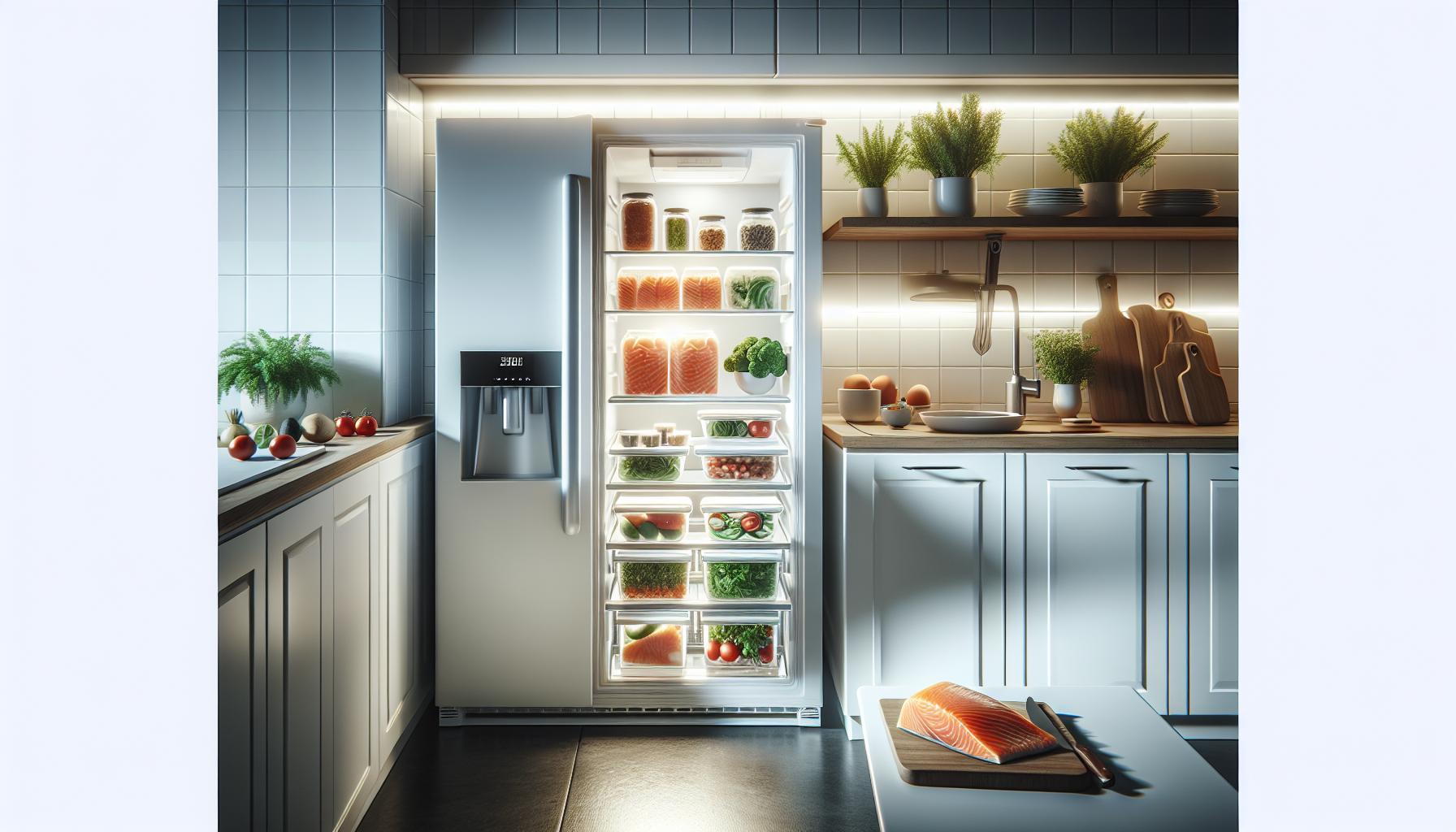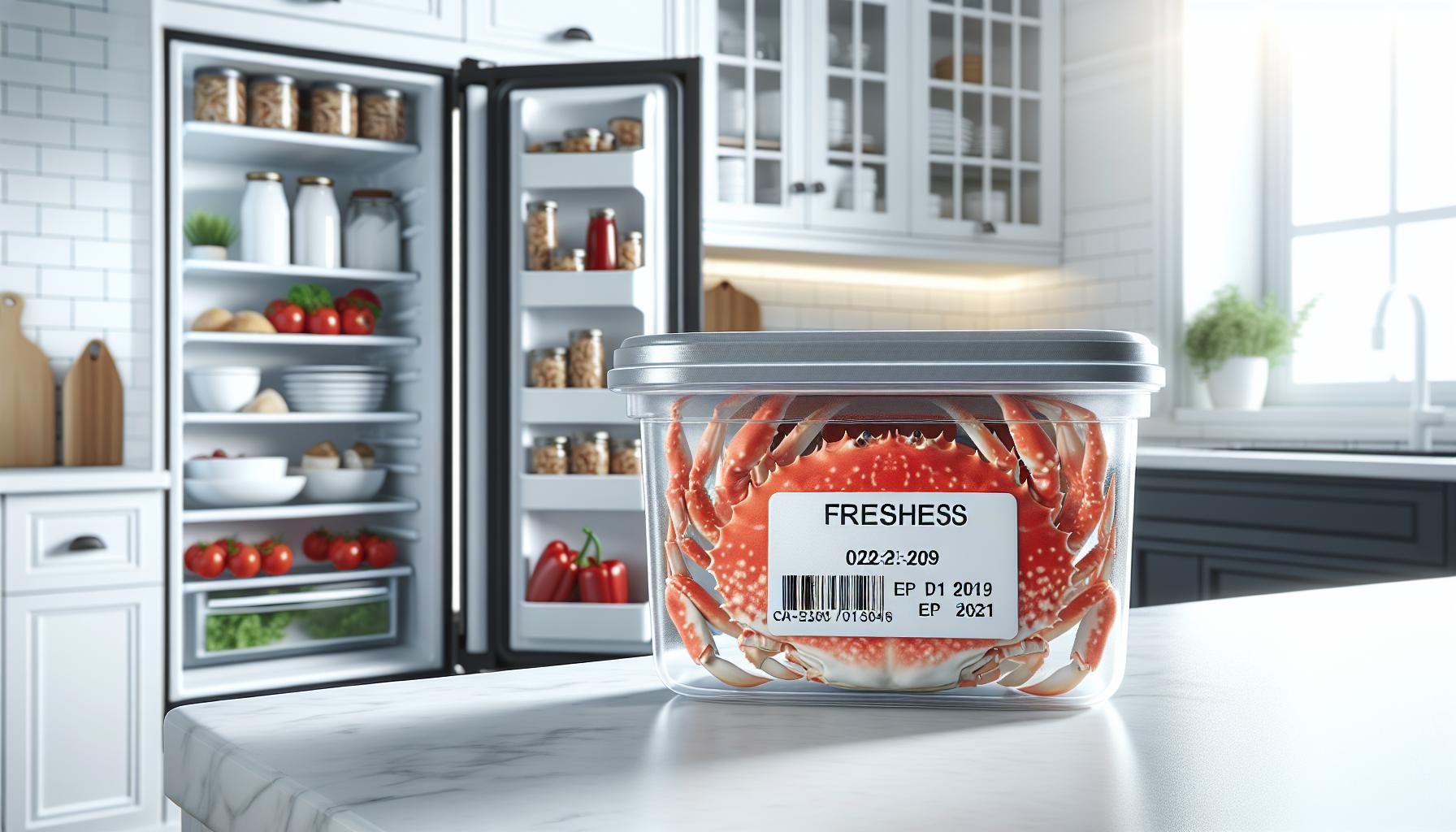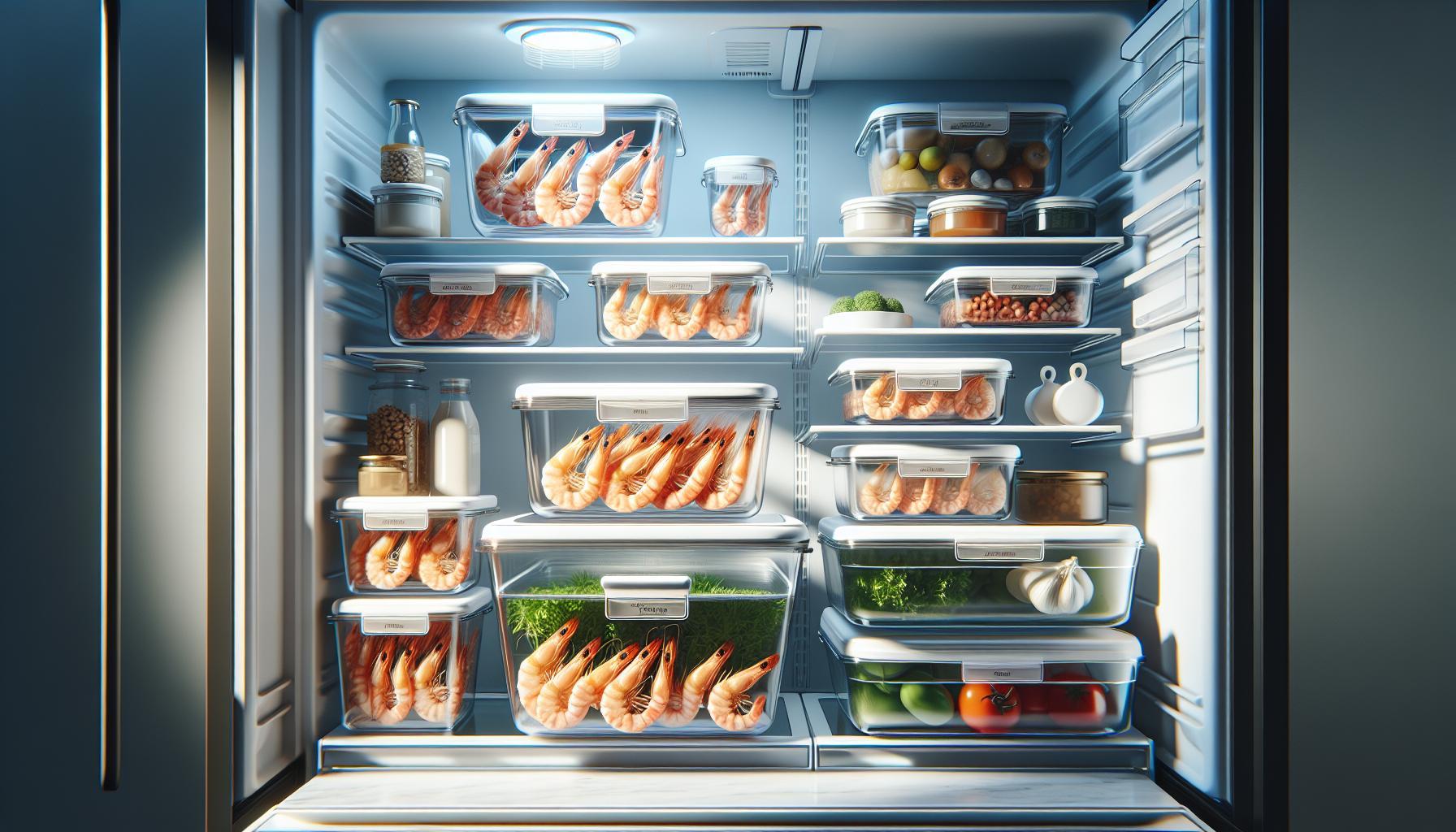Smoked salmon is a gourmet delicacy cherished for its rich flavor and versatility, but many people are unsure about its longevity once stored in the fridge. Understanding how long smoked salmon lasts is crucial not only for ensuring the best taste but also for maintaining food safety. Improper storage can lead to spoilage, losing the exquisite flavor you crave.
Whether you’ve just enjoyed a delightful brunch or have leftovers from a special occasion, knowing the right guidelines for storage is vital. You want to savor every bite without worrying about foodborne illnesses. Join us as we delve into essential storage tips, shelf life specifics, and practical advice to preserve the gourmet flavor of your smoked salmon, ensuring it remains a delightful addition to your culinary repertoire.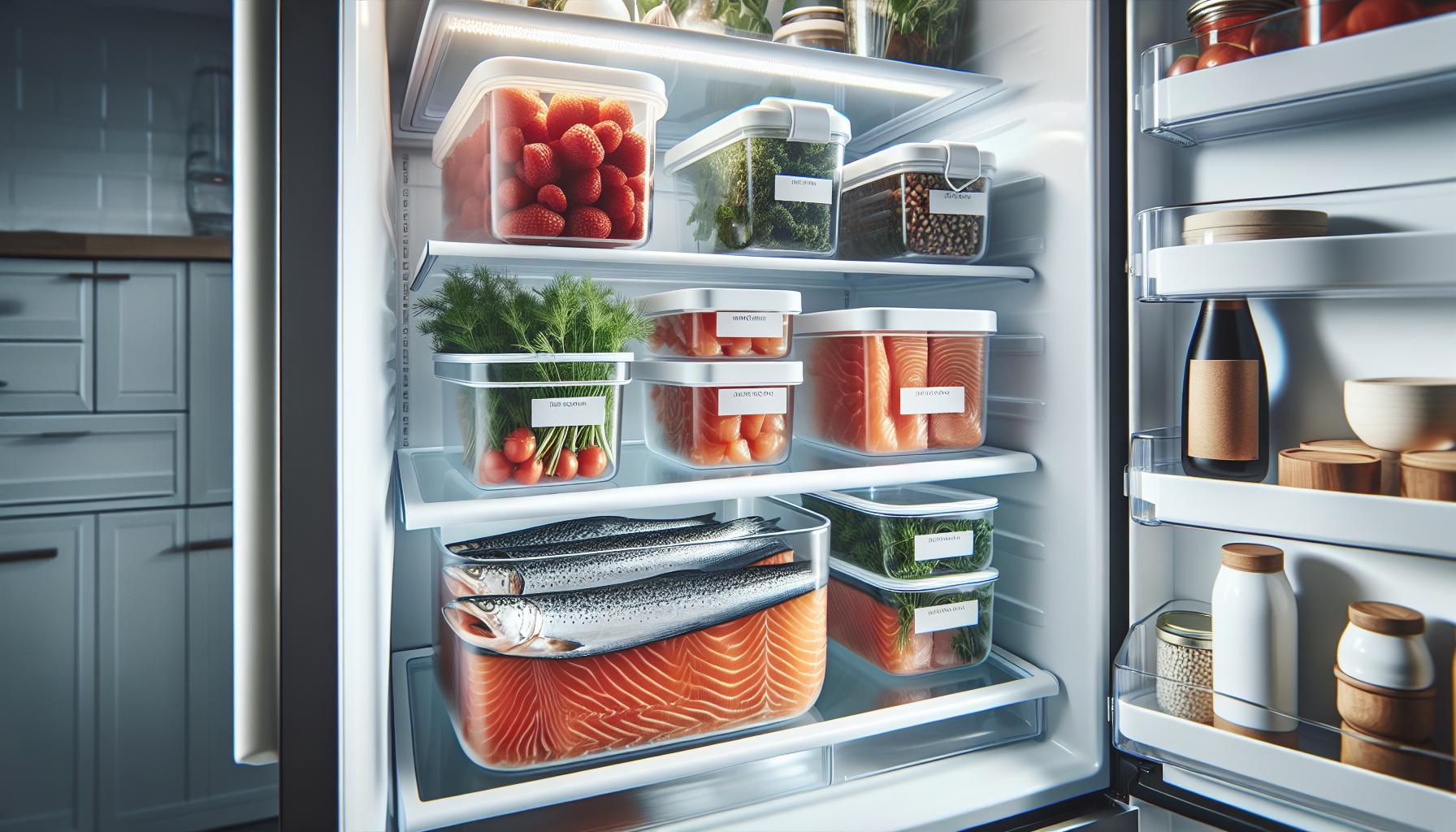
How Long Can You Keep Smoked Salmon in the Fridge?
Storing smoked salmon properly is essential for enjoying its rich, gourmet flavor while ensuring safety. Generally, smoked salmon can be kept in the refrigerator for up to 5 days after opening, provided it is stored correctly. If it’s unopened, it typically stays good for 2 to 3 weeks. The key to longevity lies in both packaging and temperature; always ensure your fridge is set to 32°F to 38°F (0°C to 3°C).
To maximize freshness, keep the smoked salmon in its original vacuum-sealed packaging until you’re ready to eat it. Once opened, transfer any leftovers to an airtight container or tightly wrap the salmon in plastic wrap. This minimizes exposure to air, which can lead to faster spoilage and a decline in quality. If you’ve made extra and are unsure whether you’ll use it all within that timeframe, freezing is a viable option.
It’s important to consider that while smoked salmon may not be harmful immediately after these timeframes, its quality will start to diminish. Look out for changes in texture, color, and odor, which are indicators that the salmon may no longer be at its best. Being mindful of these guidelines will not only help preserve the delightful flavor but also your health.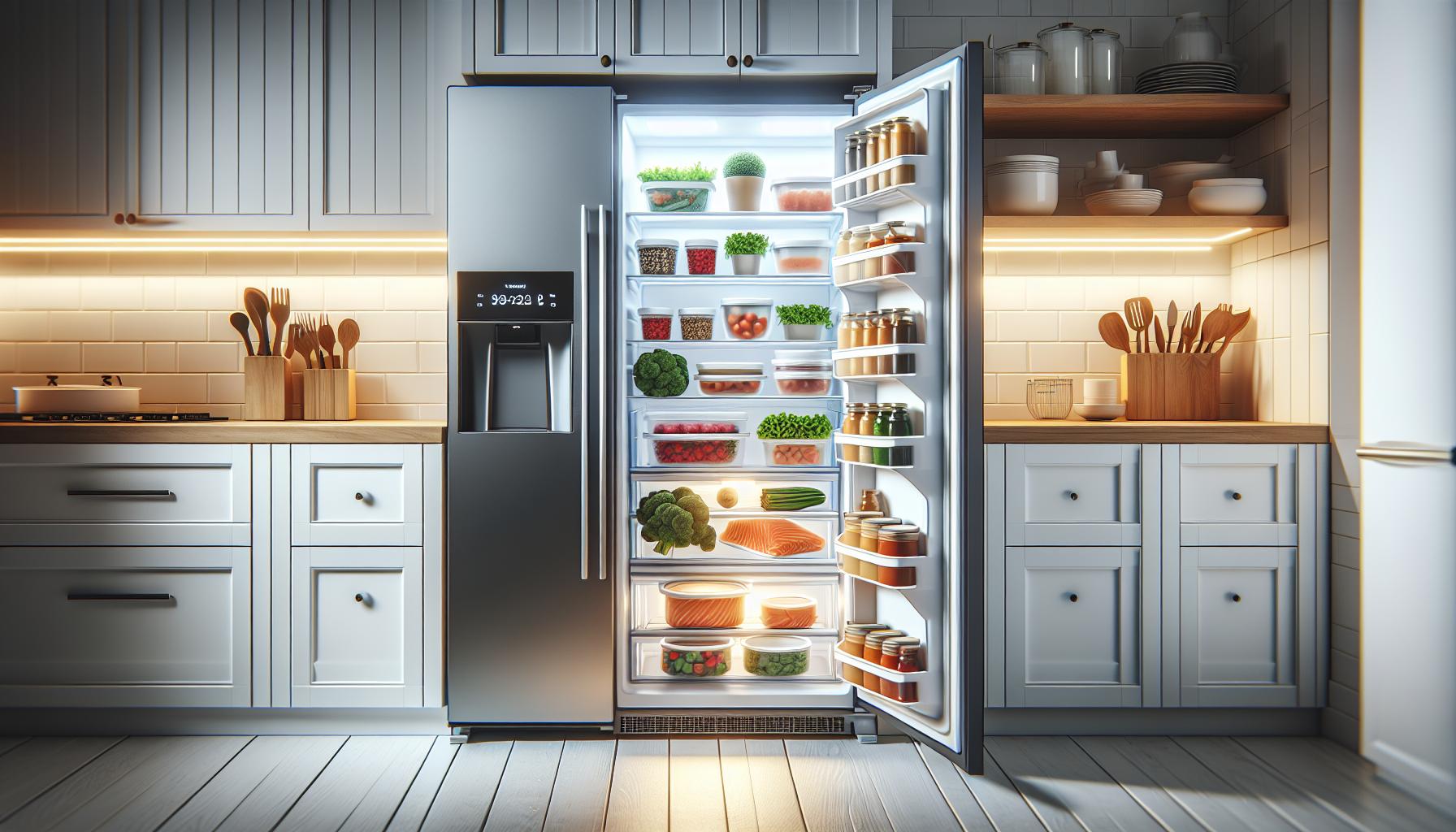
Understanding Expiration Dates for Smoked Salmon
When it comes to enjoying smoked salmon, understanding expiration dates is crucial for both safety and quality. Smoked salmon, a delicacy enjoyed in various dishes, doesn’t have an indefinite shelf life. Typically, vacuum-sealed, unopened smoked salmon can last between 2 to 3 weeks in the refrigerator. This timeframe ensures that the salmon retains its optimal flavor and texture. Once opened, however, its longevity decreases sharply, and it’s best consumed within 5 days.
Expiration dates on packaging play a vital role in guiding consumers, but it’s essential to understand the difference between “sell by,” “use by,” and “best before” dates. The “sell by” date indicates when the store should sell the product for optimal freshness, while the “use by” or “best before” date is about the product’s quality. Consuming smoked salmon past these dates does not necessarily mean it is unsafe, but the texture and flavor may significantly degrade. Always check the packaging for these dates to guide your consumption.
To maximize the freshness of smoked salmon, proper storage methods are key. Keeping the salmon in its original packaging until you’re ready to eat helps maintain its quality, as these designs are specifically made to keep air out and keep moisture inside. If you have leftover salmon, ensure you transfer it to an airtight container or tightly wrap it in plastic wrap to minimize exposure to air, which can lead to spoilage.
Signs That Smoked Salmon Has Spoiled
When it comes to smoked salmon, recognizing the signs of spoilage is essential to ensure food safety and maintain quality. While this delicacy is prized for its rich flavor and texture, improperly stored or aged smoked salmon can lead to foodborne illnesses or an unappetizing dining experience. Always trust your senses when evaluating smoked salmon. If you notice any of the following indicators, it’s wise to err on the side of caution and discard the product.
One of the first signs of spoilage is a change in smell. Fresh smoked salmon should have a pleasant, smoky aroma. If the scent becomes overly fishy or sour, it’s time to throw it away. Additionally, pay attention to the texture. Good smoked salmon is moist yet firm, while spoiled salmon may feel slimy or sticky to the touch. The appearance can also give clues; fresh smoked salmon typically has a vibrant color, whether it’s a deep orange, pink, or red. If you notice any dullness or discoloration, along with the presence of mold or an overly dry surface, it indicates that the salmon is no longer safe to eat.
In terms of storage, even if your smoked salmon is past its “use by” date, don’t just rely on that label. Evaluate it using these sensory checks. For instance, if it has been opened and stored for more than five days, it’s safer to discard it to avoid the risk of foodborne illness. Making a habit of checking these signs can help you enjoy smoked salmon at its best while ensuring your kitchen stays safe and healthy.
Best Practices for Storing Smoked Salmon
Proper storage is crucial for maximizing the shelf life and flavor of smoked salmon. This gourmet delicacy not only offers a delectable taste but also requires careful handling to preserve its quality. When stored appropriately, unopened smoked salmon can last up to two weeks in the refrigerator, while opened packages should ideally be consumed within five days. However, adhering to best practices can extend this timeframe and ensure that your smoked salmon remains fresh and flavorful.
To start, it’s important to choose the right storage container. If your smoked salmon comes in vacuum-sealed packaging, keep it sealed until you’re ready to enjoy it. Once opened, transfer the leftover salmon to an airtight container or tightly wrap it in plastic wrap or aluminum foil. This will help to minimize exposure to air and moisture, which can lead to spoilage. Store the salmon on a shelf in your fridge, where the temperature is consistently cool, rather than in the door where temperatures can fluctuate.
Temperature Control
Maintaining the ideal temperature is another key factor. The USDA recommends keeping your refrigerator at or below 40°F (4°C). Consider using a refrigerator thermometer to ensure the temperature remains consistent. For individuals who purchase smoked salmon in bulk or who don’t plan to consume it quickly, freezing is a viable alternative. Although freezing can alter the texture slightly, it can extend the shelf life for several months. Simply wrap the salmon tightly in plastic wrap, followed by a layer of aluminum foil or place it in a freezer-safe bag to prevent freezer burn.
Thawing and Reusing
When you’re ready to enjoy previously frozen smoked salmon, thaw it in the refrigerator, avoiding rapid temperature changes that can lead to bacterial growth. Once thawed, consume it within three days for optimal flavor and safety. Being mindful of these storage practices not only helps keep your smoked salmon safe but also preserves its delectable taste, allowing you to savor every bite as intended.
How to Preserve the Gourmet Flavor of Smoked Salmon
To maintain the exquisite flavor and delicate texture of smoked salmon, careful preservation practices are essential. This gourmet ingredient, beloved for its rich taste and versatility, can quickly lose its appeal without proper handling. One of the most effective ways to ensure that the flavor remains vibrant is to minimize its exposure to air. Upon opening, transfer the salmon to an airtight container or wrap it tightly in plastic wrap or aluminum foil. This not only protects it from airborne contaminants but also reduces oxidation, which can dull its flavor profile.
Temperature Considerations
The ideal storage temperature for smoked salmon is crucial in preserving its taste. Keeping the refrigerator at or below 40°F (4°C) is vital. This threshold limits the growth of bacteria that can affect both the safety and quality of the salmon. It’s recommended to store the salmon on a shelf within the fridge rather than in the door, where temperature fluctuations are more likely. For those who wish to extend the life of their smoked salmon beyond the typical refrigeration period, consider freezing it. Properly freezing-by wrapping it tightly in plastic wrap, then in aluminum foil or placing it in a freezer-safe bag-can keep the salmon flavorful for months, although some texture change may occur.
Serving and Reusing Smoked Salmon
When it comes time to serve your smoked salmon, remember to handle it gently to preserve its texture and flavor. If you’ve thawed frozen salmon, use it within three days for the best taste. Creative uses of leftover smoked salmon can also enhance your culinary experience-think beyond simple plates and consider adding it to salads, pastas, or as a topping for bagels. Each method of use can accentuate the gourmet qualities you seek to preserve while ensuring that none of this delicate treat goes to waste. By following these practices, you can enjoy the rich flavors of smoked salmon in a way that honors its gourmet origins.
Refrigeration vs. Freezing: What’s Best for Storage?
To ensure that your smoked salmon retains its delicious flavor and quality, understanding the differences between refrigeration and freezing is crucial. While both methods are effective for preserving salmon, they serve different purposes and impact the fish’s quality in unique ways.
When stored in the refrigerator, smoked salmon typically lasts for about 1 week when unopened and around 3 to 5 days after opening, given that it’s kept at or below 40°F (4°C). This short-term storage maintains the fish’s tender texture and rich smokiness, allowing you to enjoy it in its most flavorful state. To maximize freshness during refrigeration, wrap the salmon tightly in plastic wrap or store it in an airtight container. Avoid placing it in the fridge door, as the fluctuating temperatures can lead to premature spoilage.
On the other hand, freezing is a method that significantly extends the shelf life, allowing smoked salmon to remain safe and tasty for up to 2 to 3 months when properly packaged. To freeze smoked salmon, it’s essential to use a double-wrapping technique: wrap the fish in plastic wrap first, then in aluminum foil or a freezer-safe bag to prevent freezer burn. While freezing can preserve the safety of the salmon, it may slightly alter its texture; thawed salmon may be a bit softer than fresh. To retain the best flavor and texture, consume the thawed salmon within 3 days.
Ultimately, the choice between refrigeration and freezing hinges on your plans for the salmon. If you’re planning a meal in the near term, refrigeration is ideal for maintaining that gourmet flavor experience. However, if you want to store it for later enjoyment, freezing is the best option. For optimal quality, always store smoked salmon at consistent temperatures and use it within the recommended timeframes to fully appreciate this delicacy.
Can You Refreeze Smoked Salmon Safely?
Refreezing smoked salmon can be a practical solution for preserving this delicacy, but it’s essential to approach it with caution to ensure both safety and quality. The USDA advises against refreezing previously thawed smoked salmon if it has been left at room temperature for more than two hours, as this can promote the growth of harmful bacteria. However, if the salmon has been thawed safely in the refrigerator (maintained at 40°F or below) and has not been left out for extended periods, it can be refrozen without significant risk.
To refreeze smoked salmon effectively, follow these steps:
- Check the Quality: Ensure the salmon is still fresh and hasn’t developed off-odors or visible signs of spoilage. The texture should remain firm and the fish should not feel slimy.
- Wrap Properly: Use a double-wrapping technique when preparing to refreeze. First, wrap the smoked salmon tightly in plastic wrap to minimize air exposure, then place it in an airtight freezer bag or wrap it in aluminum foil. This helps prevent freezer burn and preserves the flavor.
- Label and Date: Clearly label the packaging with the date and contents. This practice helps track how long it’s been in the freezer, ensuring it’s consumed within the recommended time frame.
- Time Guidelines: Generally, refrozen smoked salmon should be consumed within one month for optimal taste, although it can be safe for up to three months in the freezer. After this period, while it may still be safe to eat, the quality may decline.
By adhering to these guidelines and maintaining proper storage techniques, you can enjoy refrozen smoked salmon while minimizing any impact on flavor or safety. Remember, the key is always to handle the salmon safely before, during, and after the thawing process to ensure a delectable experience with each serving.
Tips for Extending the Shelf Life of Smoked Salmon
To maximize the shelf life of smoked salmon and preserve its gourmet flavor, proper storage techniques are essential. Smoked salmon is a delicate product that benefits from specific handling and storage practices to ensure its freshness for as long as possible. One of the most effective strategies is to keep the salmon at a consistent, cold temperature. Always store smoked salmon in the refrigerator at temperatures below 40°F (4°C). For optimal protection against spoilage, place the salmon in an airtight container or tightly wrap it in plastic wrap, minimizing exposure to air, which can lead to oxidation and flavor loss.
Utilizing the original packaging can also be advantageous, but if it’s not resealable, consider transferring the salmon to a vacuum-sealed bag. Vacuum sealing removes the air surrounding the salmon, greatly extending its freshness by preventing freezer burn and inhibiting bacterial growth. Label the package with the date of purchase to monitor its shelf life effectively. Generally, smoked salmon can be stored in the fridge for up to two weeks. However, if you notice the expiration date approaching, using it sooner will ensure maximum quality.
Additionally, paying careful attention to the environment in which you store smoked salmon can prolong its freshness. Keep it away from fruits and vegetables, as they emit ethylene gas, which can accelerate spoilage. If you find that you cannot consume the salmon within this timeframe, freezing is a viable option. When freezing, wrap the smoked salmon tightly to protect it from air and moisture, as described in the refreezing section. Smoked salmon can maintain its best quality for up to three months in the freezer when properly stored.
Lastly, always inspect smoked salmon carefully before consumption. Look for any signs of spoilage such as an off odor, discoloration, or a slimy texture, as these are clear indicators that the salmon is no longer safe to eat. Following these tips will ensure that your smoked salmon remains flavorful and safe, allowing you to enjoy this delicacy to its fullest.
Common Mistakes When Storing Smoked Salmon
Improper storage of smoked salmon can significantly diminish its unique flavor and freshness, making it imperative to understand some common pitfalls that people often encounter. One prevalent mistake is neglecting to keep the salmon at an appropriate temperature. Smoked salmon should always be refrigerated below 40°F (4°C); failing to do so can lead to bacterial growth, which compromises both safety and taste. When exposing smoked salmon to warmer temperatures, even briefly, you set the stage for spoilage.
Another error frequently observed is using non-airtight packaging. Leaving smoked salmon in its original packaging without sealing it properly allows air to circulate, leading to oxidation and a dry texture over time. To maintain its moisture and flavor, it’s essential to transfer the salmon to an airtight container or wrap it securely in plastic wrap. Vacuum sealing is even more effective as it creates an airtight environment, greatly extending freshness.
Finally, many people mistakenly store smoked salmon alongside fruits and vegetables in the refrigerator. This is problematic because many fruits emit ethylene gas, which accelerates spoilage. Instead, it’s best to store smoked salmon in a dedicated section of the fridge, ideally in a separate area away from produce. By avoiding these common mistakes-maintaining the right temperature, using proper packaging, and storing responsibly-you can extend the shelf life of smoked salmon and savor its gourmet flavor for longer.
Creative Ways to Use Leftover Smoked Salmon
Delighting in smoked salmon doesn’t have to end when you reach the bottom of your packaging. With its rich, savory flavor, leftover smoked salmon can elevate various dishes, offering both a culinary treat and a practical approach to minimizing waste. For a quick and delicious meal, consider crafting a smoked salmon frittata. Simply whisk together eggs, add chopped veggies, and fold in the salmon before baking. This dish is perfect for breakfast, brunch, or even a light dinner.
Another creative avenue is the classic smoked salmon bagel. Spread cream cheese on a toasted bagel and top it generously with sliced smoked salmon, capers, and thinly sliced red onion. This makes for an indulgent yet simple snack or lunch option that’s sure to impress. You can also experiment by adding sauces or fresh herbs, such as dill or chives, to invigorate the flavors.
If you’re in the mood for something refreshing, consider a smoked salmon salad. Combine mixed greens, cherry tomatoes, avocados, and red onion, topped with a light vinaigrette and flaked smoked salmon. Not only is this a balanced meal, but it also highlights the salmon’s unique taste, ensuring it doesn’t go to waste.
For those seeking a more comforting dish, a smoked salmon pasta can be an excellent choice. Cook your favorite pasta and toss it with a creamy sauce, incorporating spinach and pieces of smoked salmon. This combination provides a satisfying meal that marries richness with freshness, allowing you to enjoy the gourmet flavor of your smoked salmon long after the initial enjoyment.
By incorporating these ideas, you can ensure that your leftover smoked salmon is utilized effectively, providing delicious meals while preserving that gourmet taste. Always remember to store any leftovers appropriately, keeping them airtight in the refrigerator for up to a week to maintain their quality and safety.
Nutritional Benefits of Smoked Salmon: A Quick Guide
Smoked salmon is not only a culinary delight but also a nutritional powerhouse. It’s packed with high-quality protein, essential fatty acids, and a variety of vitamins and minerals, making it a fantastic addition to a balanced diet. Just a typical serving of smoked salmon offers about 20-25 grams of protein, which is crucial for muscle repair and growth, and for maintaining overall health.
One of the standout features of smoked salmon is its rich content of omega-3 fatty acids, which are known for their heart health benefits. These healthy fats can help reduce inflammation, lower blood pressure, and reduce the risk of heart disease. According to various studies, incorporating omega-3 fats into your diet may also support cognitive function and improve mental well-being, making smoked salmon a delicious way to boost your brain health.
In addition to healthy fats, smoked salmon is a rich source of essential nutrients such as vitamin D, vitamin B12, and selenium. Vitamin D is critical for bone health and immune function, while B12 supports red blood cell formation and neurological function. Selenium is an important antioxidant that plays a role in protecting against cell damage. A serving of smoked salmon can contribute significantly to the daily recommended intake of these vital nutrients.
To ensure you maximize the benefits of smoked salmon while storing it safely, it’s essential to adhere to proper storage practices. Smoked salmon can be kept in the refrigerator for about one week if it’s unopened, but once opened, it’s best consumed within three to five days. Using airtight containers or tightly wrapping the salmon can help retain its freshness. For longer storage, freezing smoked salmon is viable as well, allowing you to enjoy its gourmet flavor while preserving its nutritional value effectively.
How to Safely Serve Smoked Salmon at Events
When planning an event where smoked salmon will be featured, it’s important to prioritize food safety while ensuring that the presentation is as appealing as possible. Smoked salmon not only adds a gourmet touch to gatherings but also requires careful handling to maintain its freshness and flavor. Essential to this is understanding the proper duration it can last in the fridge and how to serve it safely.
Before serving, always check the storage conditions of the smoked salmon. If it has been unopened and stored correctly in the refrigerator, it can last about one week. Once opened, however, consume it within three to five days for the best quality. If the salmon has been refrigerated and is nearing its expiration date, it’s ideal to implement your serving plan to prevent waste.
When it comes to serving, keeping the salmon chilled is a must. Consider using a chilled platter or a serving tray filled with ice to maintain a safe temperature below 40°F (4°C). This not only preserves flavor but also minimizes the risk of bacterial growth. If serving in a buffet setting, rotate the salmon out as it sits out too long or serve smaller portions that can be quickly refreshed.
For maximum presentation and enjoyment, create an appealing smoked salmon platter that includes a variety of accompaniments, such as capers, dill, thinly sliced onions, and cream cheese. Pairing it with crisp crackers or bagels can also provide texture contrast. As an additional touch, label your platter with serving suggestions to entice guests to explore different flavor combinations. This not only enhances the dining experience but reinforces safety by ensuring guests know how to enjoy the food responsibly.
By following these guidelines, you can elevate your event with delicious smoked salmon while ensuring a safe and delightful experience for all your guests.
Q&A
Q: How can you tell if smoked salmon is still good?
A: You can determine smoked salmon’s freshness by checking for a dull color, an off odor, or a slimy texture. Fresh smoked salmon should have a bright, vibrant hue and a pleasant, briny smell. For specific signs of spoilage, refer to the section on “Signs That Smoked Salmon Has Spoiled.”
Q: What is the best way to thaw frozen smoked salmon?
A: The best way to thaw frozen smoked salmon is to transfer it from the freezer to the refrigerator and let it thaw overnight. This method helps maintain its texture and flavor. Avoid thawing at room temperature, as it can promote bacterial growth.
Q: Can smoked salmon be vacuum sealed for longer storage?
A: Yes, vacuum sealing smoked salmon can extend its shelf life significantly by removing air that can cause spoilage. Stored correctly, vacuum-sealed smoked salmon can last up to several months in the freezer. Refer to the “Best Practices for Storing Smoked Salmon” section for more details.
Q: How long does opened smoked salmon last in the fridge?
A: Once opened, smoked salmon typically lasts about 3 to 5 days in the fridge if stored properly in an airtight container. Always refer to the “How Long Can You Keep Smoked Salmon in the Fridge?” section for comprehensive guidelines.
Q: What should you do with leftover smoked salmon?
A: Leftover smoked salmon can be used in salads, pasta dishes, or as a topping for bagels. For creative ideas, check the “Creative Ways to Use Leftover Smoked Salmon” section for inspiration and recipes.
Q: Is it safe to eat expired smoked salmon?
A: It is generally not safe to eat expired smoked salmon. If it has surpassed its expiration date or shows signs of spoilage, discard it to avoid foodborne illnesses. Always follow the guidelines in the “Understanding Expiration Dates for Smoked Salmon” section.
Q: How should you store smoked salmon to keep it fresh?
A: To keep smoked salmon fresh, store it in the coldest part of the refrigerator, ideally wrapped tightly in its original packaging or in an airtight container. For long-term storage, consider freezing it. See “Best Practices for Storing Smoked Salmon” for detailed instructions.
Q: Can you serve smoked salmon straight from the fridge?
A: Yes, smoked salmon can be served straight from the fridge as it is already cooked and safe to eat. However, letting it sit at room temperature for about 15 minutes can enhance its flavor and texture before serving.
The Way Forward
Knowing how long smoked salmon lasts in the fridge is key to preserving its gourmet flavor and ensuring food safety. Typically, when properly stored, smoked salmon can maintain its freshness for up to a week. To maximize its shelf life, always keep it tightly sealed in its original packaging or an airtight container. Don’t let your delicious investment go to waste-check for any signs of spoilage, and when in doubt, throw it out!
If you’re eager to learn more about enhancing your smoked salmon experience, be sure to explore our guides on the best smoker recipes or discover how to make the perfect smoked brisket at home. For those looking to elevate their culinary skills, sign up for our newsletter for tips, tricks, and exclusive recipes that will keep you inspired in the kitchen! Your next gourmet dish awaits-dive deeper into the world of smoking and preserving flavors today!

